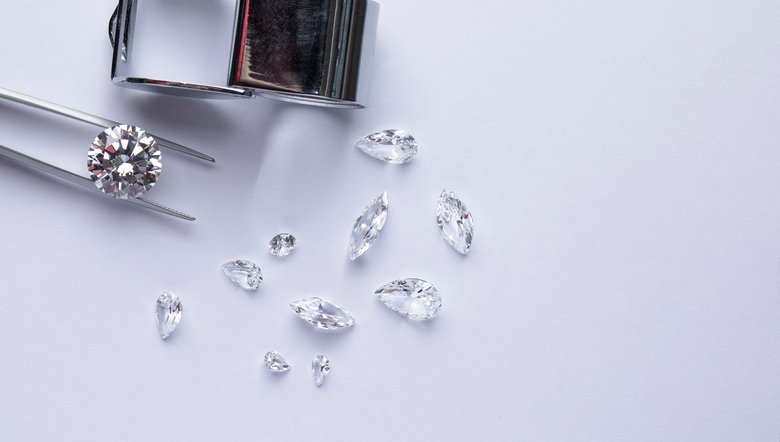Lab grown diamonds have revolutionized the jewelry industry, offering an ethical and cost-effective alternative to natural diamonds. This article explores everything you need to know about loose lab grown diamonds, from their quality and certification to buying tips and environmental impact.
Table of Contents
Introduction to Lab Grown Diamonds
In recent years, lab grown diamonds have gained popularity as a sustainable and affordable option for consumers. Unlike natural diamonds formed deep within the Earth over millions of years, lab grown diamonds are created in controlled laboratory environments using advanced technological processes. They share the same chemical and physical properties as natural diamonds, making them indistinguishable to the naked eye.
Benefits of Choosing Loose Lab Grown Diamonds
Cost-effectiveness: One of the primary advantages of lab grown diamonds is their price point. On average, lab grown diamonds cost 20-40% less than natural diamonds of comparable quality, making them more accessible for budget-conscious buyers.
Ethical considerations: Unlike natural diamonds, which may be associated with ethical concerns such as conflict mining (blood diamonds), lab grown diamonds are ethically sourced. They do not contribute to human rights abuses or environmental degradation often linked to traditional diamond mining.
Environmental impact: The process of creating lab grown diamonds generates significantly lower environmental impact compared to diamond mining. It reduces the demand for mining activities, land disturbance, and water usage, aligning with sustainable practices.
Quality and Certification of Lab Grown Diamonds
Lab grown diamonds undergo rigorous grading and certification processes similar to natural diamonds. They are graded based on the 4Cs—cut, color, clarity, and carat weight—by reputable gemological laboratories like GIA (Gemological Institute of America) and IGI (International Gemological Institute).
Popular Shapes and Cuts
Lab grown diamonds are available in a variety of shapes and cuts to suit different preferences and jewelry designs. The most popular include the classic round brilliant, elegant princess cut, romantic cushion cut, and many others like emerald, oval, pear, and marquise cuts.
Color Options Available
While clear or white diamonds are the most sought-after, lab grown diamonds also come in a range of fancy colors such as pink, blue, yellow, and green. These colored diamonds are prized for their uniqueness and vibrant hues.
Clarity Grades Explained
Similar to natural diamonds, lab grown diamonds are graded for clarity from Flawless (FL) to Included (I3). Clarity refers to the presence of internal and external imperfections or inclusions that can affect the diamond’s brilliance and transparency.
Carat Weight and Size Considerations
Carat weight directly influences the size and price of lab grown diamonds. A higher carat weight typically means a larger diamond, but prices can vary based on other factors such as cut, color, and clarity.
Setting Choices for Loose Lab Grown Diamonds
Whether you prefer a classic solitaire setting to highlight the diamond’s brilliance or a halo setting for added sparkle, lab grown diamonds offer versatile options. Custom designs are also popular for creating unique, personalized jewelry pieces.
Buying Guide: Tips and Considerations
When purchasing loose lab made diamonds, consider buying from reputable retailers or manufacturers known for quality and customer service. Look for certifications, warranties, and customer reviews to ensure a satisfying purchase experience.
Maintenance and Care Tips
To keep your lab grown diamond jewelry looking its best, clean it regularly using mild soap and warm water or a non-abrasive jewelry cleaner. Store diamonds separately to prevent scratching and maintain their brilliance.
Future Trends in Lab Grown Diamonds
As technology advances, lab grown diamonds are expected to become even more prevalent in the jewelry market. Increasing consumer awareness of ethical and sustainable choices is driving demand for these eco-friendly alternatives.
Myths vs. Facts about Lab Grown Diamonds
Despite their growing popularity, there are still myths surrounding lab grown diamonds, such as concerns about their quality or resale value. In reality, lab grown diamonds are chemically and optically identical to natural diamonds, and they hold their value over time.
Environmental Impact of Lab Grown Diamonds
Compared to natural diamond mining, the production of lab grown diamonds consumes less energy and water and produces fewer carbon emissions. Choosing lab grown diamonds supports sustainable practices and reduces the industry’s environmental footprint.
Conclusion
In conclusion, loose lab grown diamonds offer a compelling choice for consumers seeking beautiful, sustainable, and ethically sourced jewelry. With their affordability, diverse options, and minimal environmental impact, lab grown diamonds are reshaping the future of the diamond industry. Whether you’re buying an engagement ring, anniversary gift, or personal indulgence, consider the advantages of lab grown diamonds and make a choice that aligns with your values and preferences.



